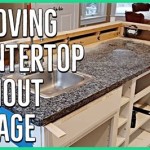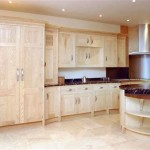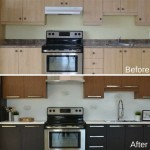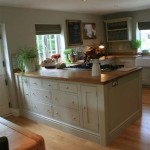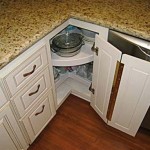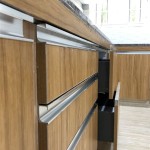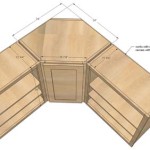Metal Kitchen Cabinets From The 1950s: A Durable and Stylish Relic
The 1950s represent a pivotal era in American design, marked by post-war optimism, technological advancements, and a burgeoning consumer culture. Within the domestic sphere, the kitchen underwent a significant transformation, evolving from a utilitarian space into a modern showcase of efficiency and style. One key element that epitomized this change was the widespread adoption of metal kitchen cabinets. These cabinets, a departure from traditional wood construction, offered a compelling blend of durability, hygiene, and contemporary aesthetics, solidifying their place as a defining feature of mid-century kitchens.
Metal cabinets resonated with the spirit of the age, mirroring the sleek lines and industrial influences prevalent in automotive design and architectural trends. They were manufactured with precision, often incorporating features that simplified food preparation and storage. While wood cabinets remained a viable option, metal cabinets presented distinct advantages that appealed to homeowners seeking a modern and practical kitchen environment. This article will explore the key attributes, design considerations, manufacturing processes, and lasting appeal of metal kitchen cabinets from the 1950s.
Durability and Practicality: The Cornerstones of Metal Cabinet Appeal
One of the primary reasons for the popularity of metal kitchen cabinets was their inherent durability. Constructed from steel, typically coated with enamel or powder coating, these cabinets were significantly more resistant to wear and tear than their wooden counterparts. Steel's inherent strength provided a robust structure capable of withstanding the rigors of daily kitchen use. Unlike wood, metal was not susceptible to warping, cracking, or insect infestation, ensuring a longer lifespan for the cabinets.
The smooth, non-porous surfaces of metal cabinets were also easier to clean and maintain. Splatters and spills could be wiped away quickly without leaving stains or requiring laborious scrubbing. This hygienic quality was particularly appealing in a kitchen environment where cleanliness was paramount. The resistance to moisture also prevented the growth of mold and mildew, contributing to a healthier living space.
Furthermore, metal cabinets offered enhanced fire resistance compared to wood. While not entirely fireproof, the metal construction slowed the spread of flames and provided more time for occupants to evacuate in the event of a kitchen fire. This safety feature, though often unspoken, contributed to the overall sense of security associated with metal cabinets.
The practical design of metal cabinets further enhanced their appeal. Many models incorporated built-in features such as adjustable shelves, pull-out drawers, and spice racks, maximizing storage space and improving accessibility. The standardized dimensions of metal cabinets also facilitated modular design, allowing homeowners to customize their kitchen layouts to suit their specific needs and preferences. This flexibility was a significant advantage over custom-built wood cabinets, which often required more time and expense to install.
Design and Aesthetics: Embracing the Modern Aesthetic
Beyond their practical advantages, metal kitchen cabinets played a crucial role in defining the modern aesthetic of 1950s kitchens. Manufacturers offered a wide array of colors and finishes, allowing homeowners to personalize their kitchens and express their individual style. Pastel hues, such as turquoise, pink, and yellow, were particularly popular, reflecting the optimistic and cheerful mood of the era. These vibrant colors were often contrasted with chrome or stainless steel accents, creating a sleek and visually appealing look.
The streamlined designs of metal cabinets further contributed to their modern appeal. Cabinets typically featured clean lines, minimal ornamentation, and flush-mounted doors. This minimalist approach contrasted sharply with the ornate detailing found in Victorian-era kitchens, reflecting a shift towards simplicity and functionality. The emphasis on clean surfaces and geometric shapes aligned with the principles of mid-century modern design, which prioritized functionality and visual harmony.
The hardware used on metal cabinets also played a significant role in their overall aesthetic. Chrome or stainless steel pulls and knobs were common, adding a touch of sophistication and complementing the smooth surfaces of the cabinets. The hardware was often designed with ergonomics in mind, providing a comfortable grip and ease of use. Details such as rounded edges and recessed handles further enhanced the streamlined look and feel of the cabinets.
Manufacturers often incorporated innovative design elements into metal cabinets, such as built-in lighting and integrated appliances. Under-cabinet lighting illuminated countertops, improving visibility during food preparation, while integrated appliances, such as refrigerators and ovens, created a seamless and unified look. These features further enhanced the functionality and convenience of the modern kitchen.
Manufacturing and Installation: Streamlining the Kitchen Update
The mass production of metal kitchen cabinets was a testament to the advancements in manufacturing technology during the 1950s. Steel sheets were precisely cut and formed using automated machinery, ensuring consistent dimensions and high-quality construction. The cabinets were then meticulously finished with enamel or powder coating, providing a durable and attractive surface. The use of standardized components and assembly line techniques allowed manufacturers to produce large quantities of cabinets at a relatively low cost.
The installation of metal kitchen cabinets was also relatively straightforward, thanks to their modular design and standardized dimensions. Cabinets were typically delivered pre-assembled, requiring only minor adjustments to fit the specific kitchen layout. This simplified installation process reduced the time and labor involved, making metal cabinets an attractive option for homeowners undertaking kitchen renovations. The use of adjustable leveling feet ensured that the cabinets were properly aligned, even on uneven floors.
The accessibility and affordability of metal kitchen cabinets contributed significantly to their widespread adoption. Manufacturers marketed their products aggressively, highlighting the durability, hygiene, and modern aesthetics of metal cabinets. Advertisements often featured idealized images of families enjoying their modern kitchens, reinforcing the aspirational appeal of metal cabinets. Department stores and home improvement centers also played a key role in distributing metal cabinets, making them readily available to consumers across the country.
Several prominent manufacturers dominated the metal kitchen cabinet market during the 1950s, including Youngstown Kitchens, Geneva Modern Kitchens, and St. Charles Kitchens. These companies invested heavily in research and development, constantly innovating to improve the design and functionality of their products. They also collaborated with renowned designers to create stylish and aesthetically pleasing cabinets that reflected the latest trends in interior design.
While metal kitchen cabinets eventually lost some of their popularity in subsequent decades, their influence on kitchen design remains significant. They represent a pivotal moment in the evolution of the kitchen, marking a shift towards greater efficiency, hygiene, and modern aesthetics. Today, vintage metal kitchen cabinets are highly sought after by collectors and homeowners seeking to recreate the charm and character of mid-century design. Their enduring appeal is a testament to their durability, practicality, and timeless style.

Morton Steel Kitchen Cabinets Since 1942 Retro Renovation

This Time Capsule Ge Steel Kitchen Has Almost Everything Kitchens Were Famous For Retro Renovation

Image Detail For 1950s Metal Cabinets Youngstown Kitchen Picture By Retro

48 Best Steel Metal Kitchen Cabinets Beautiful Photos Vintage

The History Of Vintage Steel Kitchen Cabinets 100 Brands Retro Renovation

Vintage Steel Kitchen Cabinetry Old Houses Under 50k

Morton Vintage Metal Steel Kitchen Cabinets 1950s Mid Century For

1950s Metal Kitchen Cabinets

How Can I Change Up Old Metal Kitchen Cabinets Besides Painting Them Hometalk

Aqua Ge Metal Kitchen Cabinets For On The Forum Michigan Retro Renovation Steel Vintage
Related Posts

